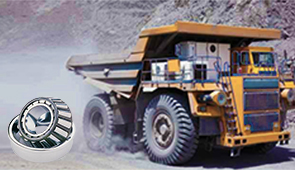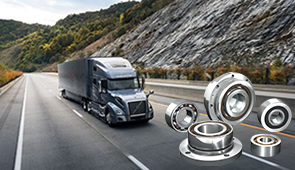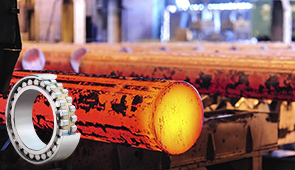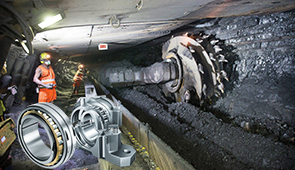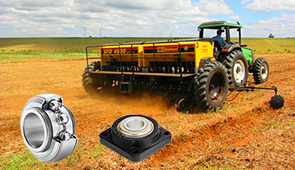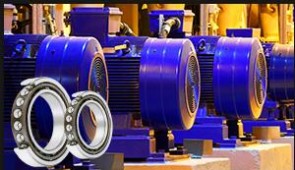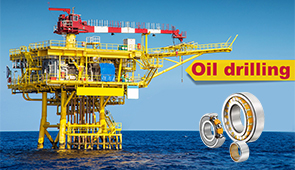Grease vs Oil: Unveiling the Crucial Differences in Metal-on-Metal Lubrication
Lubrication is a critical component in minimizing friction and wear in metal-on-metal applications, ensuring the longevity and efficiency of mechanical systems. Whether in industrial machinery, automotive engines, or aerospace components, the appropriate choice of lubricant—be it grease or oil—directly impacts performance, reliability, and maintenance requirements. While both grease and oil serve as lubricants, they differ significantly in composition, application, and performance characteristics. Understanding these distinctions is essential for selecting the most effective solution tailored to specific operational demands. This article explores the fundamental differences between grease and oil, their respective advantages and limitations, and the scenarios in which each type excels, providing a comprehensive framework for informed decision-making in lubrication practices.
When should you use grease instead of oil for lubrication?
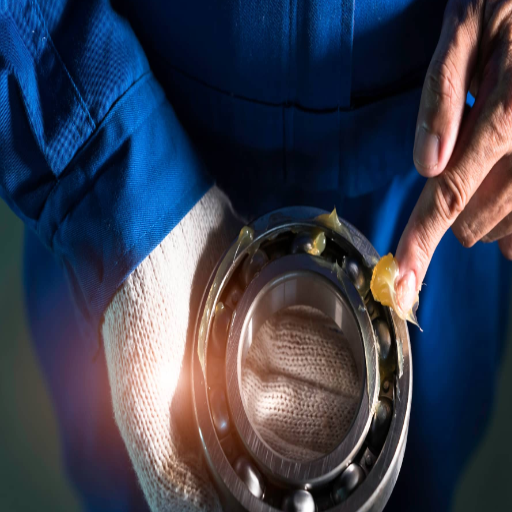
Situations where grease is the preferred lubricant
Using grease instead of oil is ideal in several specific scenarios where its properties offer distinct operational advantages. I prefer grease for applications where lubrication points are exposed to contamination, such as dust or water since grease forms a protective barrier that resists the ingress of foreign particles. Additionally, grease is highly effective in low-speed, high-load environments often encountered in bearings, gears, or oscillating motions, where its higher viscosity ensures consistent lubrication and reduces the risk of oil leakage.
- Operating Temperature Range: Grease generally has a wider range of operational temperatures, especially in high temperatures where oil is likely to vaporize or lose its viscosity.
- Load-Carrying Capacity: Since grease has a semi-solid consistency, it is not displaced under heavy loads and thus minimizes wear in important places.
- Sealing Ability: Grease’s semi-solid state helps seal the lubrication point, thereby preventing contamination and prolonging the life of the component.
Concerning these operational requirements, grease is an excellent selection for specific lubrication problems.
Benefits of using grease in specific applications
In speaking about the advantages of grease applications, I grapple with its intrinsic nature that satisfies the crucial functional determinants of the process. Grease is helpful in cases and circumstances where there is a need to hold lubrication longer and for more enduring periods.
- Extended Lubrication Interval: Because of its semi-solid state, grease is not constantly being displaced like oil. This characteristic means there is less need to re-apply lubricant. This is handy in places where there is limited access for servicing, such as remote installations like bearing systems.
- Resistance to Contaminants: Grease, sealing over mechanical parts does not allow passage of dust, dirt, or moisture, which facilitates dependable actions of important parts such as gears and couplings amidst extreme debris or liquid exposure.
- Temperature Stability: Many high-quality greases are designed to maintain their viscosity and not vaporize at extreme temperatures, ensuring effective lubrication in high-temperature applications like industrial ovens or continuous manufacturing setups.
- Shock Load Absorption: Heavy machines and equipment where impact loadings are common, can take full advantage of grease because it inherently serves as an energy-absorbing substrate.
- Corrosion Protection: The application of grease to metal, especially those that are exposed to marine and high-humidity environments, will greatly reduce oxidation and corrosion due to the protective layer that grease provides.
Such specifications explain why grease is used in different applications and provides effective, long-lasting, and low-maintenance solutions for important systems.
How do oil and grease perform in different bearing types?
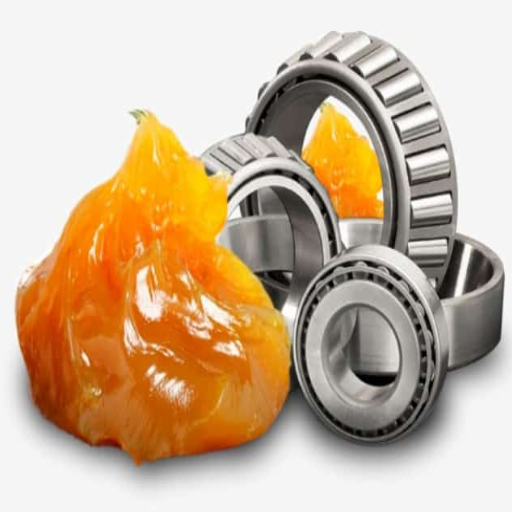
Choosing between oil and grease for various bearing designs
When I chose between oil and grease for different bearing designs, I ensured maximum utilization and efficiency by considering a couple of technical criteria. Here are my considerations in this regard:
- Rotational Speed: In the case of high-speed bearings, I prefer oil lubrication because it increases overall heat removal and reduces friction better. The viscosity of oils can be modified for these conditions and increase the temperature threshold for expansion.
- Load Capacity: In cases of heavy load or shock load applications, I prefer grease because of its superior film thickness, which allows it to stick to contact surfaces, provide cushioning, and resist wear.
- Operating Temperature: Extreme temperatures (>120◦C) oils are preferred because they circulate and cool the bearing more effectively. For moderate temperatures, stabilization grease does the job without the circulation systems’ intricacy.
- Environmental Conditions: For bearing working under dirty, dusty, or wet conditions, grease is my choice as it seals contaminants out and provides a corrosion-resistant barrier. Oil is effective too but additional sealing would be needed to achieve these results.
- Maintenance Requirements: Grease has lower maintenance requirements which makes it sa uitable permanent lubricant in places that are hard to reach. On the other hand, oil systems provide the advantage of being able to assess machine conditions, but require more regular service maintenance and stronger re-circulation systems.
Using this approach, I will be able to choose appropriately for the particular design and application features of the bearing for dependable and durable operation.
Impact of bearing speed and load on lubricant selection
The relation of bearing speed and load is important when choosing a lubricant. Low-viscosity lubricants are commonly used for high-speed operations as they lower friction, and heat, and enable smooth operations. On the contrary, for high-load operations, a high-viscosity lubricant is essential to support an adequate lubricating film under pressure. Specifically:
- High-speed bearings: Low-viscosity lubricants with a kinematic viscosity typically in the range of 10-100 cSt at 40°C are ideal. These reduce shear resistance and prevent overheating.
- High-load bearings: High-viscosity lubricants, typically above 100 cSt at 40°C, are necessary to achieve adequate film strength and minimize wear.
These lubricants are modified with anti-wear (AW) or extreme pressure (EP) additives suited for particular operational environments.
What are the advantages and disadvantages of oil vs grease?
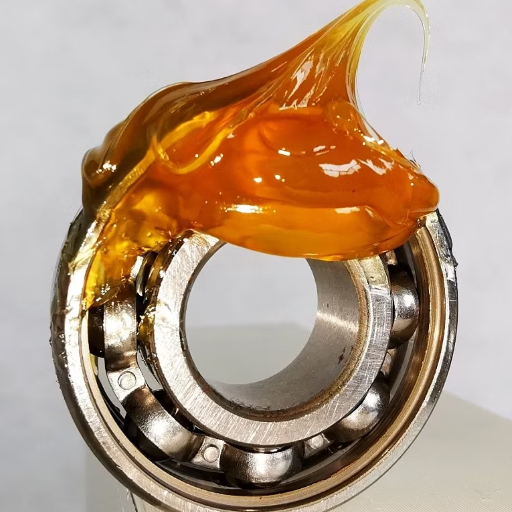
Pros and cons of using oil as a lubricant
Using oil as a lubricant has distinct advantages and disadvantages, which I will outline below based on design considerations.
Advantages:
- Thermal Resistance: Compared to other types of lubricants, oils are usually superior where heat dissipation is concerned making them ideal for moderate to high-temperature applications. For instance, oil circulation systems within gearboxes or engines serve as a good example of where important components are accurately cooled to a nonoverheat state.
- Lubrication Distribution: Oils work well for some applications due to their relatively low viscosity (10 – 100 cSt at 40°C). Their low viscosity enables them to reach and lubricate bearings and similar small or highly interactable moving parts, effectively reducing friction.
- Contamination Removal: Oil can virtually wash contaminants away during circulation, which is greatly helpful in systems where some form of filtration is used to increase the lifespan of components.
Disadvantages:
- More Prone to Leakage: Compared to grease, oil lubricants have a greater risk of leakage due to their fluid characteristics. Worn seals on a system that is not properly maintained can also contribute to the problem.
- More Complex Operations: The incorporation of additional oil pumps, reservoirs, and filters makes its casting a circulating oil system more complex than the rest.
- Poor Adhesiveness: Oil compared to grease does not stay in position as well, which makes it unsuitable for places where the lubricant will be positioned for a longer time on sthe urface to be lubricated, and adds some level of vertical movement, and mounts that move slowly.
Choosing oil as a lubricant, I also consider the operating temperature, the required viscosity, potential contamination, and the system design for his specific application.
Benefits and drawbacks of grease lubrication
Advantages:
- Improved Grease Retention: Grease tends to stay in position relative to oil due to its semi-solid consistency. This makes it especially suitable for vertical surfaces or other slow-moving parts or components that have gravitational effects associated.
- Barrier Properties: Grease suffers from the fact that it can facilitate the entry of dust, dirt, or moisture, however, if the component is sealed in such a way that contact with grease is the only way, it can greatly prolong the service of the components in hostile conditions.
- Minimized Falling Off: Grease is resilient to falling off, especially when subjected to low pressure or uneven surfaces. This incorporates sludge, dirt, or other particles that find their way into machines and cause productivity drops.
- Maintenance Friendly: The grease application is a one-stop solution. It does not have to be reapplied often as oil due to its viscosity. This allows for less downtime and maintenance.
- Extreme Temperature Performance: Extreme low to above 500-degree grease (-40°F to -40°C), such as those made out of lithium complex, polyurea grease, or high-temperature greases, called are best suited for measuring performance in harsh conditions.
Disadvantages:
- Limited Thermal Regulation: Grease is not advised for use in high-speed applications where the thermal load is significant due to the low capacity for temperature circumvention.
- Higher Friction: Grease is viscous and this could potentially increase certain systems’ resistance leading to energy loss in high-speed machines, making energy costs get higher.
- Accumulation of Contaminants: Grease can capture contamination within a system, which makes maintenance and re-application essential, unlike circulated oil.
- Challenges in Application: Initial use is much more challenging and frequently requires operators or special tools to access narrow or complex spaces.
These factors make grease easy to use but also demonstrate the importance of ensuring that the given application parameters are met to enhance effectiveness.
How do oil and grease differ in terms of cooling properties?
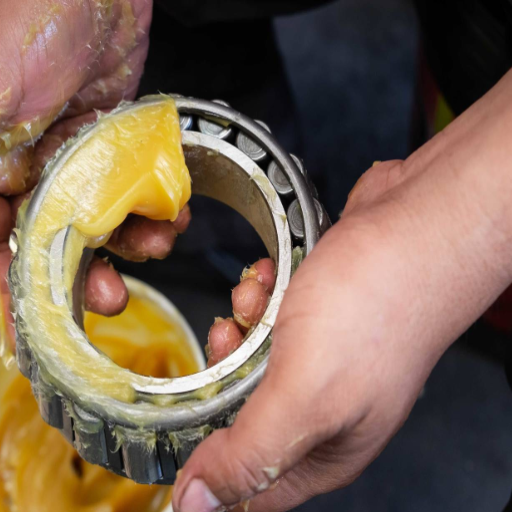
Understanding the heat dissipation capabilities of oil
Because oil can flow, it is typically better than grease in dispersing heat. Oil circulation allows for it to take in heat from important parts and transfer it to the cooling unit, for instance to a heat exchanger or sump. This ensures a constant temperature of the system. It is critical in machines that rotate fast or those that are operating under high loads because they produce a lot of heat.
- Thermal Conductivity: Different types of oils generally exhibit more thermal conductivity when compared to grease which leads to quick transfer of energy from protruding surfaces.
- Viscosity: The fact that oil can pour freely at operational temperatures helps ease the thermal barriers.
- Specific Heat Capacity: Oil’s high specific heat capacity also enables them to store and move around more energy which is ideal for devices that constantly require cooling.
- Flow Rate: In a system that circulates oil, the rate of flow is proportional to the rate at which energy is lost, hence oil circulation systems offer adjustable cooling to meet the needs of a device.
Oil loses energy as it circulates through the system. It helps with cooling, but at the same time, it helps get rid of wear particles and other solid contaminants which lead to improved performance and life of the machine.
Thermal management characteristics of grease
Grease plays an important part in thermal management through localized heat dissipation in structures that cannot be easily relubricated or oil circulation systems are impractical. Grease is typically formulated by mixing a base oil, thickener, and additives which affects thermal properties in different ways:
- Thermal Conductivity: Because grease is usually in a semi-solid state, it contains lower levels of thermal conductivity compared to oil probably making it slower in transferring heat.
- Consistency and Viscosity: The thickener in grease makes it more viscous and enables it to adhere better to surfaces enabling it to remain in high friction areas. Much like oils, this consistency limits the flow of grease thereby offering more stability yet losing the ability to dissipate heat efficiently.
- Temperature Resistance (Dropping Point): The dropping point of grease which is around 150°C to 300°C is affected by the type of thickener used. This makes grease suitable to areas with moderate thermal loads where stable performance is needed.
- Heat Absorption: The specific heat capacity of grease is lower than oil. While adding different materials and engineering the composition can balance the retention and dissipation of heat in a mechanism.
When selecting grease to ensure effective thermal management, operational requirements, and other factors such as system compatibility also came into consideration.
What role does viscosity play in choosing between oil and grease?
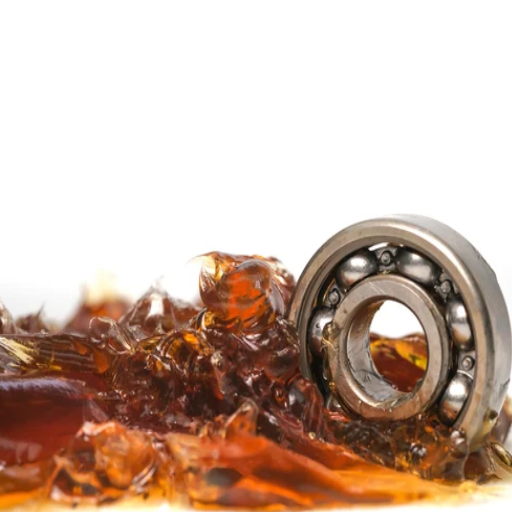
The importance of viscosity in oil selection
When choosing an oil, I consider the operational speed, load, and temperature of the system. For high-speed applications, a lower-viscosity oil is preferred to minimize friction, while low-speed, high-load systems require a higher viscosity to maintain adequate film thickness.
- Kinematic Viscosity: This is measured in centistokes (cSt) at 40 and 100 degrees C and determines the flow characteristics of the oil. For example, ISO VG standards classify oils based on the ranges of kinematic velocities.
- Viscosity Index (VI): Higher VI indicates that the oil is less responsive to thermal changes, hence maintaining viscosity in the thick and thin states, which is essential for a system with great thermal ranges.
- Operating Temperature Range: Selecting oil whose viscosity performance is within the designated operational temperature range guarantees fluidity at low temperatures and effective film strength at higher temperatures.
These considerations are essential throughout the oil’s service life to maintain optimal lubrication performance over an extended period minimizing wear, energy losses, and thermal degradation.
How grease consistency affects lubrication performance
The consistency of grease is significant because it affects the load capacity of the component, shear stability, and the placement of grease during operating conditions. The ASTM D217 describes the penetration of grease, which establishes a consistency rating ranging from NLGI Grade 000 (liquid) to Grade 6 (solid block).
In high-speed conditions, a lower NLGI Grade 1 or 2 grease is better because it increases efficiency by decreasing some of the friction. On the contrary, the use of a higher NLGI grade 3 or 4 grease with better film strength is more suitable for low-speed, high-load applications to resist lubricant flow under high pressure. Consistency also determines the ‘stay-in-place’ ability of the grease which is critical for bearings, gears, and other components subjected to vibration or shock conditions.
- Sweeting: also improves the grease’s “stay-in-place” ability. Lower NLGI values also enhance the performance of the grease formulations and increase the efficiency of the gears.
- Consistency (NLGI Grade): Measure of the resistance of grease to mechanical stress and deformation. Indicates the stiffness of the grease and its resistance to deformation under stress.
- Drop Point: Gauge of the grease’s thermal strength; ensures it functions without significant softening or leaking at operational temperatures.
- Shear Stability: Measures the grease’s degree of performance over the lifetime of the application under mechanical loads.
- Base Oil Viscosity: This must be considered in conjunction with grease consistency to ensure it meets the specific lubrication requirements of the application, especially under varying speed and load conditions.
These specifications which improve a formulation’s consistency during the breakdown process are essential to provide satisfactory performance and reduce wear and energy losses and mechanical failures in the given operational envelope.
Frequently Asked Questions (FAQs)
Q: What is the main difference between oil and grease in metal-on-metal lubrication?
A: The main difference between oil and grease is their consistency. Oil is a liquid lubricant that flows freely, while grease is a semi-solid substance that stays in place. Grease consists of a base oil mixed with a thickener, creating a fibrous network that holds the oil in place. This allows grease to provide longer-lasting lubrication in certain applications where oil might quickly drain away from metal-on-metal contact points.
Q: When should grease be used over oil in metal-on-metal applications?
A: Grease should be used over oil in situations where: 1. Long-term lubrication is needed without frequent reapplication 2. The lubricant needs to stay in place and not drip or run off 3. There’s exposure to contaminants or moisture 4. The machinery operates at low speeds or experiences start-stop motions 5. Sealing properties are required in addition to lubrication Grease is often preferred for bearings, gears, and other components that need consistent lubrication without constant maintenance.
Q: What are the advantages of using oil instead of grease for metal-on-metal lubrication?
A: Oil has several advantages over grease in certain metal-on-metal applications: 1. Better heat dissipation and cooling properties 2. Ability to circulate and filter out contaminants 3. More effective at higher speeds 4. Easier to apply and replace 5. Can reach tight spaces more easily 6. Provides more consistent lubrication in high-speed applications Oils are often used in engines, turbines, and other high-speed machinery where heat dissipation and constant lubrication are crucial.
Q: What are food-grade lubricants and when are they used?
A: Food-grade lubricants, also known as food-safe lubricants, are specially formulated oils or greases that are safe for incidental food contact. They are used in food processing equipment, packaging machinery, and other applications where there’s a possibility of the lubricant coming into contact with food products. Food-grade lubricants are categorized by the NSF (National Sanitation Foundation) into different classes (H1, H2, H3) based on their intended use and the likelihood of food contact. These lubricants ensure food safety while maintaining the necessary lubricating properties for metal-on-metal applications in the food industry.
Q: How does the consistency of grease affect its performance in metal-on-metal lubrication?
A: The consistency of grease, typically measured by its NLGI grade, significantly affects its performance in metal-on-metal lubrication. Softer greases (lower NLGI grades) tend to flow more easily and are better suited for low-temperature applications or centralized lubrication systems. Harder greases (higher NLGI grades) stay in place better and are often used in high-temperature or high-pressure applications. The right consistency ensures that the grease remains in the lubrication point, provides adequate oil release for proper lubrication, and maintains its structure under operating conditions. Choosing the correct consistency is crucial for optimal lubrication and equipment protection.
Q: What factors should be considered when choosing between oil or grease for a specific application?
A: When deciding between oil or grease for a specific application, consider the following factors: 1. Operating speed of the machinery 2. Operating temperature range 3. Load conditions (light, moderate, or heavy) 4. Environmental factors (exposure to water, dust, or chemicals) 5. Accessibility for relubrication 6. Sealing requirements 7. Potential for leakage or contamination 8. Heat dissipation needs 9. Filtration requirements 10. Viscosity needs at operating temperature Assessing these factors will help in choosing the most appropriate lubricant type and quality for optimal performance and equipment longevity.
UCTH213-40J-300 with Setscrew(inch)
CNSORDERNO: Normal-duty(2)
TOGN: UCTH213-40J-300
SDI: B-R1/8
SD: 2 1/2
UCTH212-39J-300 with Setscrew(inch)
CNSORDERNO: Normal-duty(2)
TOGN: UCTH212-39J-300
SDI: B-R1/8
SD: 2 7/16
UCTH212-38J-300 with Setscrew(inch)
CNSORDERNO: Normal-duty(2)
TOGN: UCTH212-38J-300
SDI: B-R1/8
SD: 2 3/8
UCTH212-36J-300 with Setscrew(inch)
CNSORDERNO: Normal-duty(2)
TOGN: UCTH212-36J-300
SDI: B-R1/8
SD: 2 1/4
UCTH211-35J-300 with Setscrew(inch)
CNSORDERNO: Normal-duty(2)
TOGN: UCTH211-35J-300
SDI: B-R1/8
SD: 2 3/16
UCTH211-34J-300 with Setscrew(inch)
CNSORDERNO: Normal-duty(2)
TOGN: UCTH211-34J-300
SDI: B-R1/8
SD: 2 1/8









